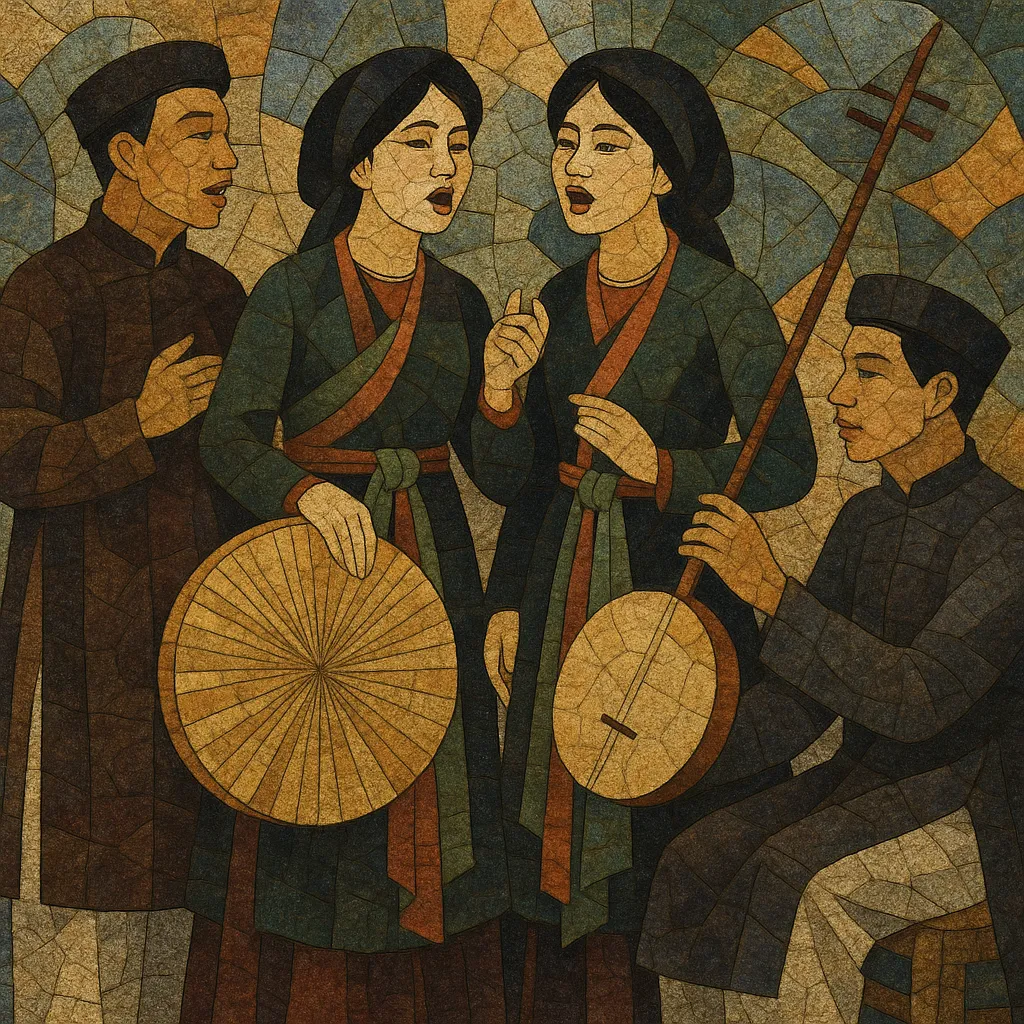Quan họ (Quan ho) is a northern Vietnamese antiphonal love-duet tradition centered in the Kinh Bắc region (today’s Bắc Ninh and Bắc Giang). It is typically performed by paired groups of young men (liền anh) and young women (liền chị) who exchange call-and-response songs during spring village festivals.
Vocally, Quan họ is mostly a cappella, featuring supple, melismatic lines, fluid portamento, and close two-voice harmonies that hover between unison and parallel intervals. Melodies are modal, often pentatonic-leaning, and delivered with an elastic, speech-informed rhythm that can move between free rubato openings and gentle, lilting pulse.
Texts draw on vernacular poetry, courtship metaphors, nature imagery, and playful verbal wit. Performances unfold as ritualized suites—beginning with ‘greeting’ songs, proceeding through responsive ‘challenge’ songs, and closing with ‘giã bạn’ (farewell) items. While historically unaccompanied, modern staging may add discreet traditional instruments such as đàn bầu (monochord), đàn nguyệt (moon lute), sáo trúc (bamboo flute), and light percussion. UNESCO inscribed Quan họ on the Representative List of the Intangible Cultural Heritage of Humanity in 2009.
Quan họ is widely traced to the Kinh Bắc cultural heartland, with local lore and scholarly accounts placing its emergence at least as far back as the 13th century. Rooted in village-to-village exchanges during spring festivals (notably the Lim Festival), the genre developed as a refined social practice of musical dialogue and courtship.
Historically, performances were embedded in carefully codified etiquette: paired male and female troupes met as peers, exchanged greetings, and then answered one another’s songs in matched modes and texts. The repertoire coalesced into groupings—opening ‘lề lối’ (establishing tone and mode), playful ‘đối đáp’ (responsive challenges), and closing ‘giã bạn’ (farewells)—each carrying social meaning and musical expectations.
Quan họ’s melodic language is modal and ornamented, favoring flexible phrasing, rubato introductions, and seamless glides between tones. Two-voice delivery is quintessential, often hovering near unison before blossoming into tight, parallel motion. Lyrics draw on folk poetry, metaphor, and nature imagery, and singers prize blend, breath control, and nuanced diction.
In the 20th century, Quan họ moved from intimate courtyards to concert stages and radio, prompting the addition of gentle instrumental accompaniment and formalized costumes (áo tứ thân, nón quai thao). State and provincial ensembles, village clubs, and conservatories now preserve and teach the form. In 2009, UNESCO recognition catalyzed revitalization, documentation, and community-based safeguarding, ensuring the tradition continues alongside contemporary reinterpretations.


